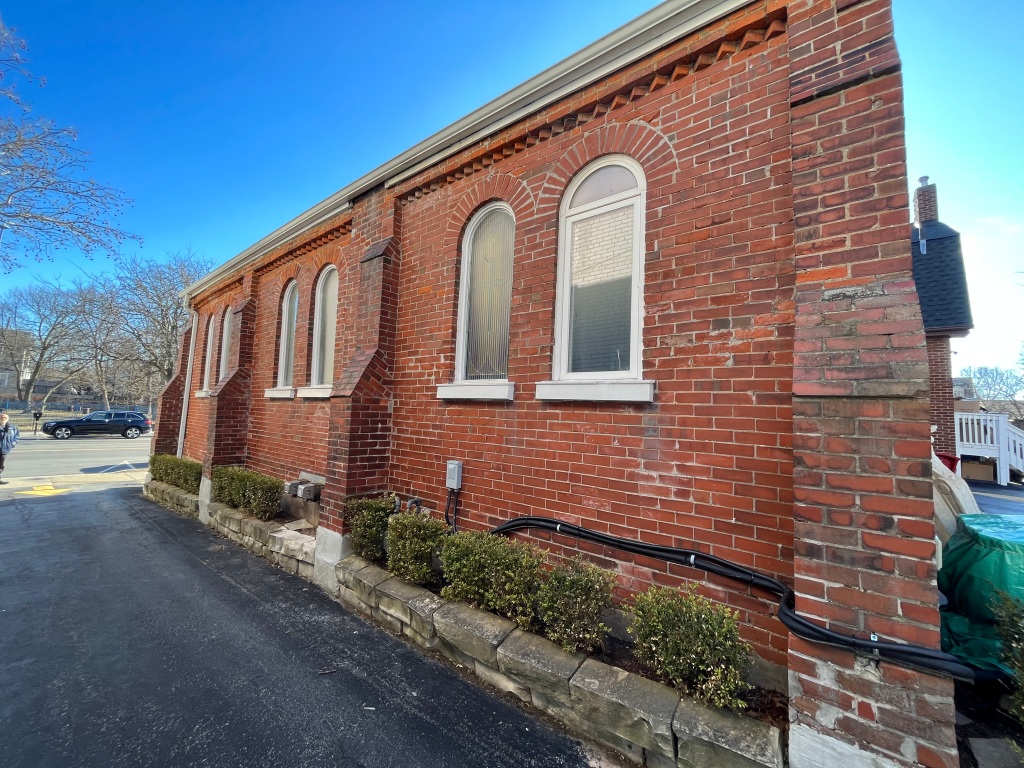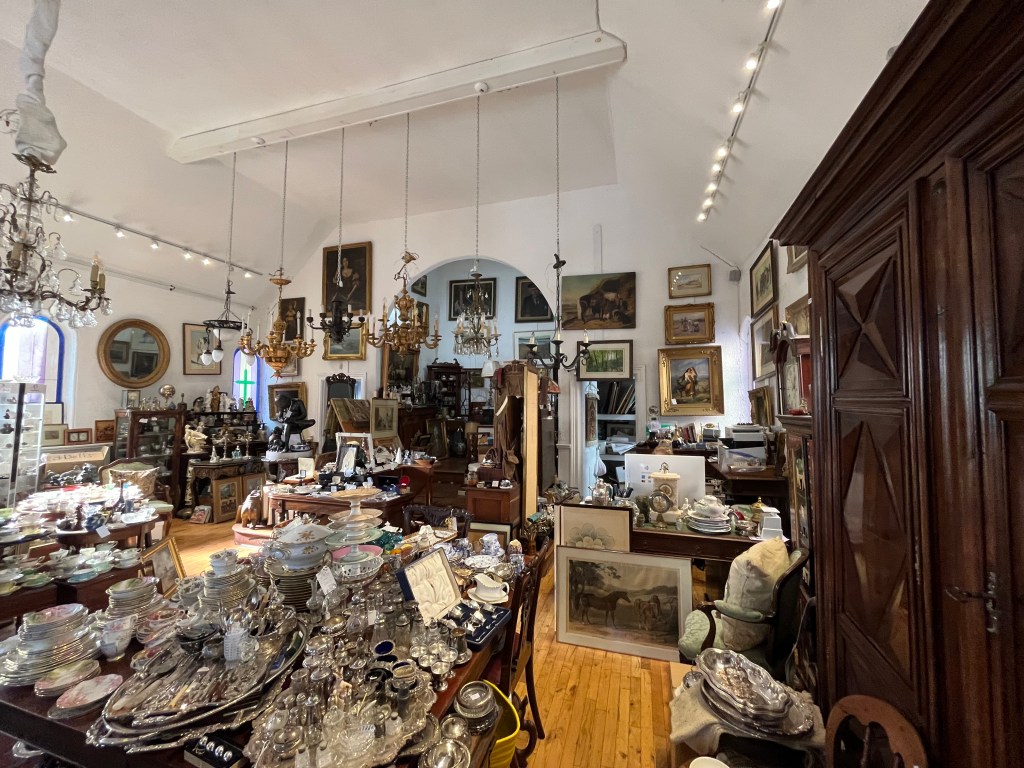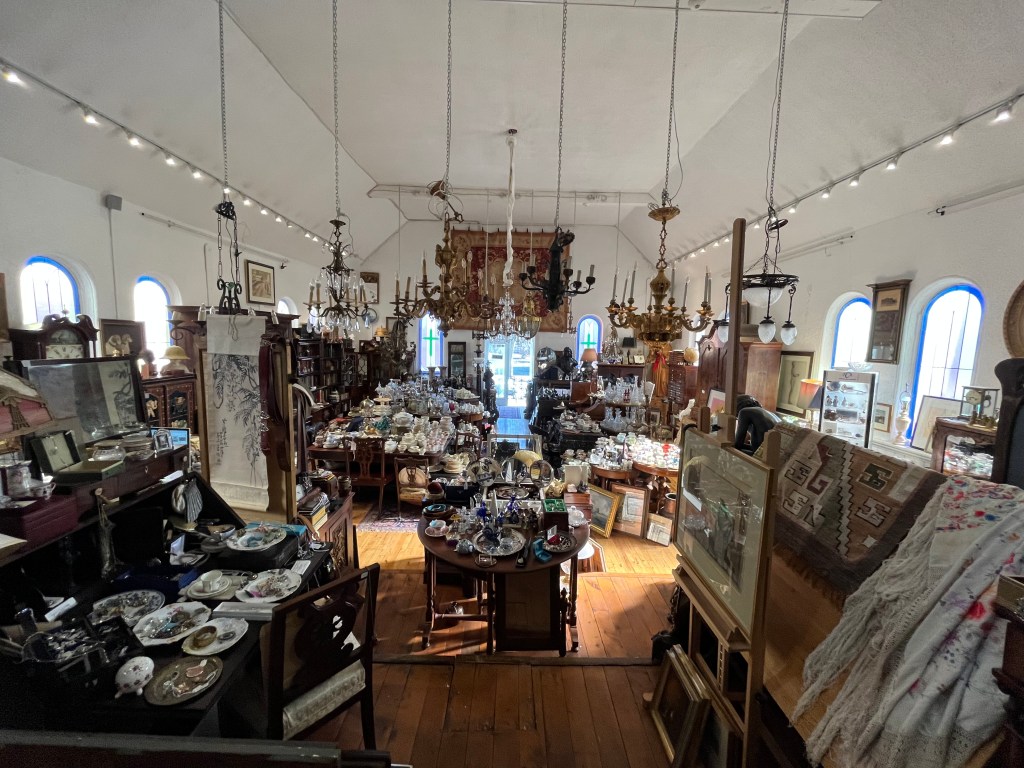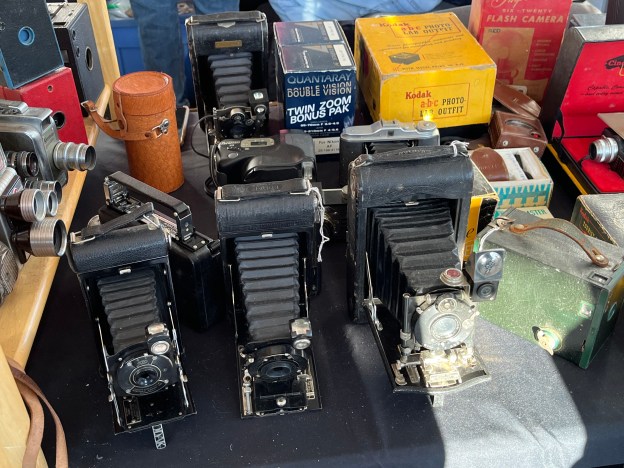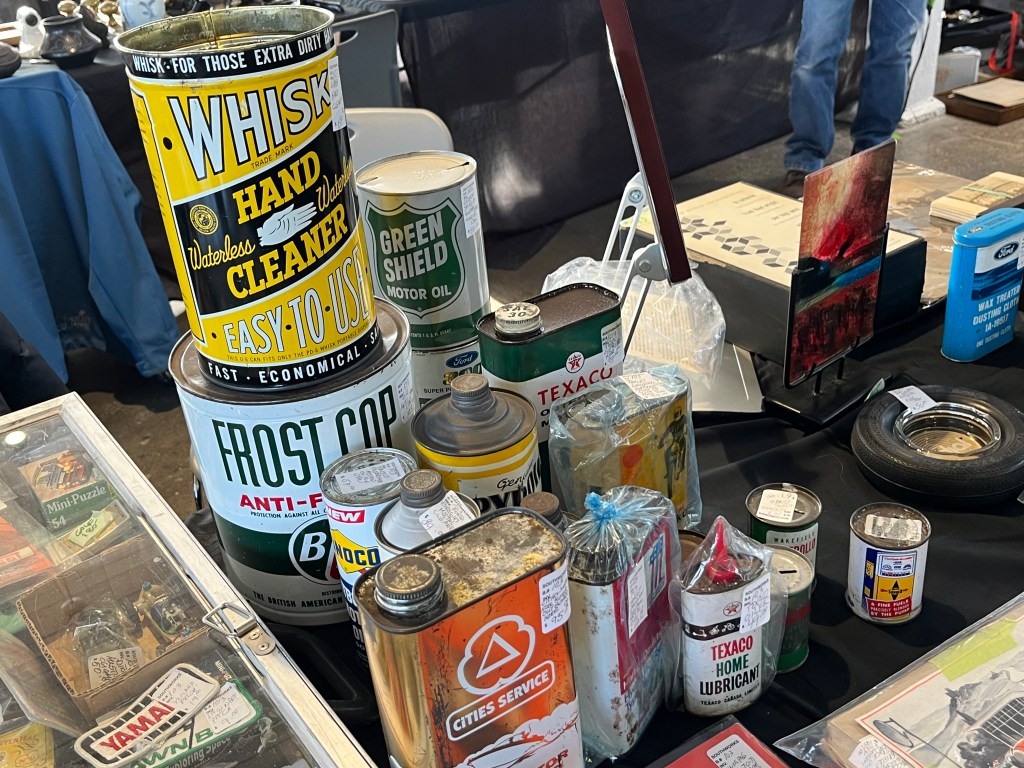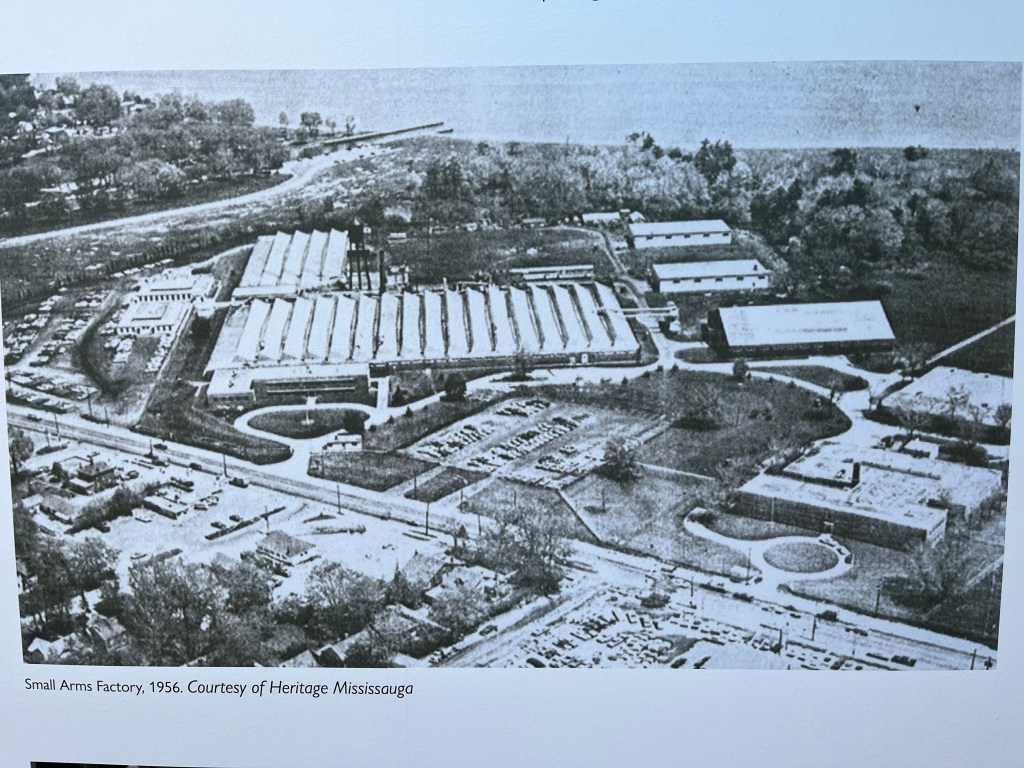Sunday, February 26, 2023
The Royal Ontario Museum is one of the largest museums in North America and is the largest in Canada. It was established on April 16, 1912 and opened on March 19, 1914 and was initially governed by the Government of Ontario and the University of Toronto. It has been expanded a couple of times and now is home to 40 galleries and over 6,000,000 items. In addition to the permanent galleries, it also hosts special exhibitions on a regular basis. Many blogs could be written on the various galleries but as I have been fascinated with fossils and dinosaurs since I was a young boy, I’ve decided to write this initial blog about their dinosaur collection.
Trilobites were among the first marine arthropods (invertebrate animals with an exoskeleton) and flourished for about 270 million years starting around 521 million years ago. There have been over 22,000 species of trilobites discovered so far.

Fossils are formed when living organisms are buried quickly before they have time to decompose. Usually this happens when they are covered with mud, sand or volcanic ash. The soft tissues will often disappear leaving only the skeleton but sometimes even the tissues can be preserved. More sand or mud is deposited on top of the animal or plant and over time this will turn into rock. The bones themselves will turn to stone in a process known as being lithified. Eventually the rock may erode away exposing the fossil.
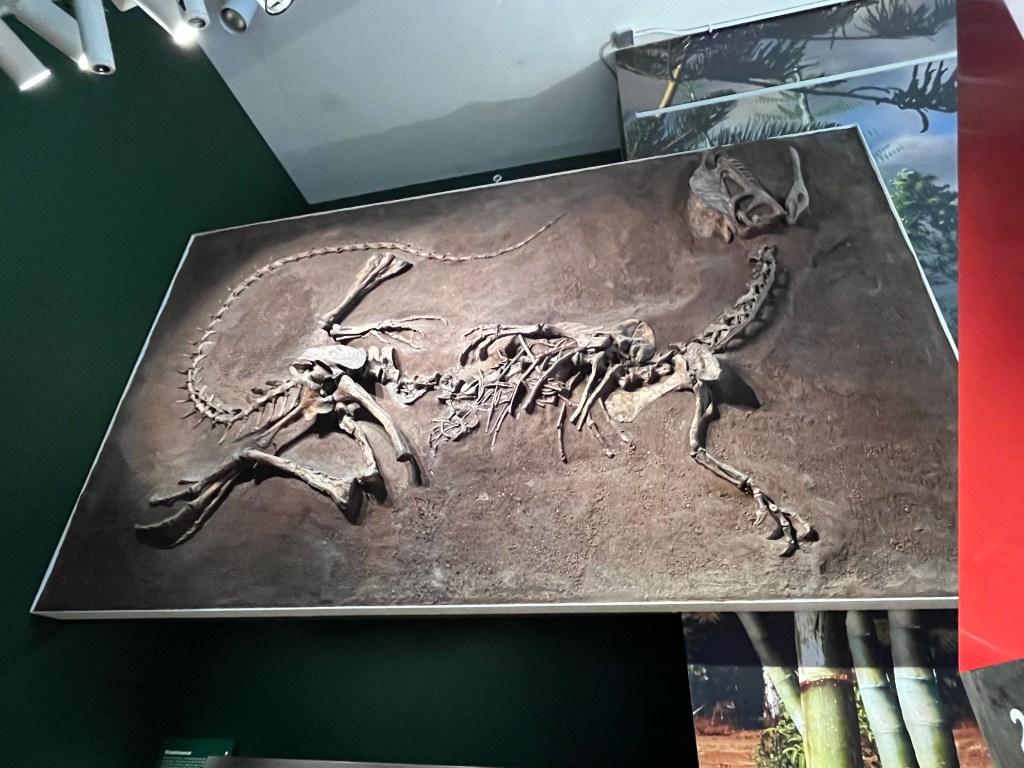
The first dinosaur fossil was discovered in England in 1672 and was named Megalosaurus, which means Great Lizard in Greek. The species itself wasn’t scientifically named until 1824 when it was originally thought to have walked on all fours like a lizard. Since then, further discoveries have shown that it was a biped and looked similar to a Tyrannosaurus Rex like the one featured on the cover photo. Some fossils are found in a nearly complete format like the one pictured above but this isn’t often the case. Sometimes only a bone or a few pieces of skeleton are found and the Megalosaurus was first identified by just a femur bone. The skeletal head of a Triceratops is featured below and is distinguished by the three horns on the face.

Albertosaurus was a similar species to the Tyrannosaurus Rex but smaller and very limited in range. It appears to have been pretty much restricted to the province of Alberta. It is interesting because since its original discovery in 1884 there have been 30 examples discovered. Of these, 26 were found in one location which suggests pack behaviour. Due to the larger than average number of specimens, it has been possible for Albertosaurus to be studied in greater detail than many other species where there are relatively few examples available.
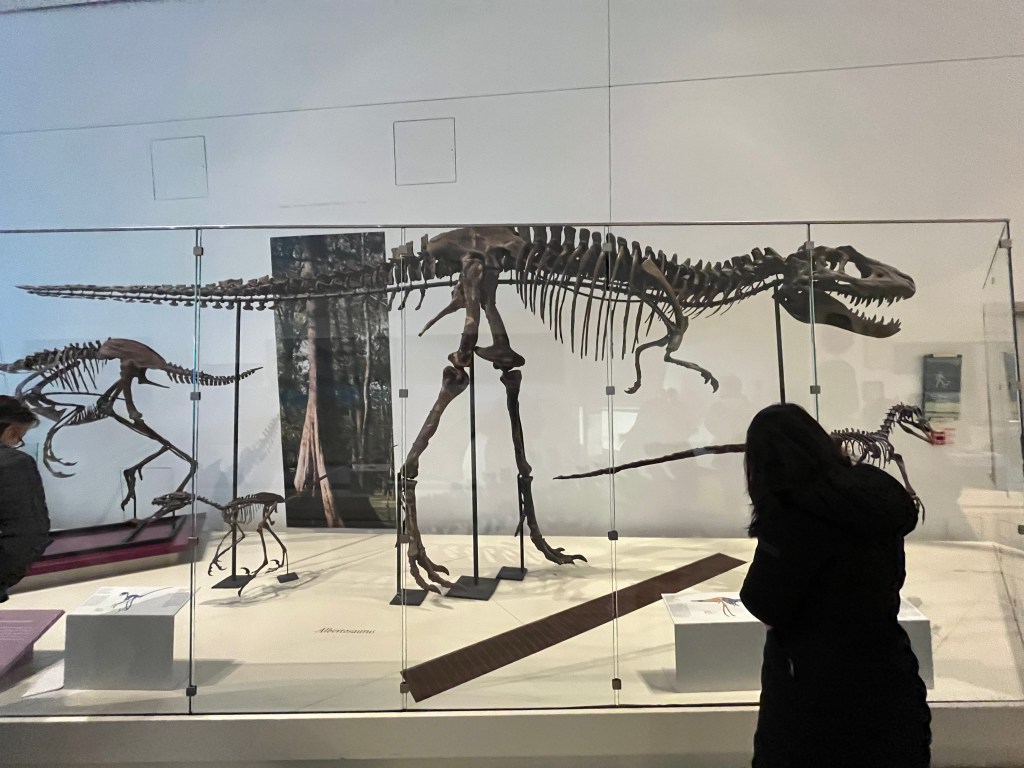
Sauropods were the largest dinosaurs and Brontosaurus is likely the best known species within the group. These animals had long thin necks and tiny heads as well as long tails. They were herbivores and could reach 22 metres in length and weigh up to 17 tonnes. They lived around 150 million years ago in North America and were discovered in 1879 in Wyoming.
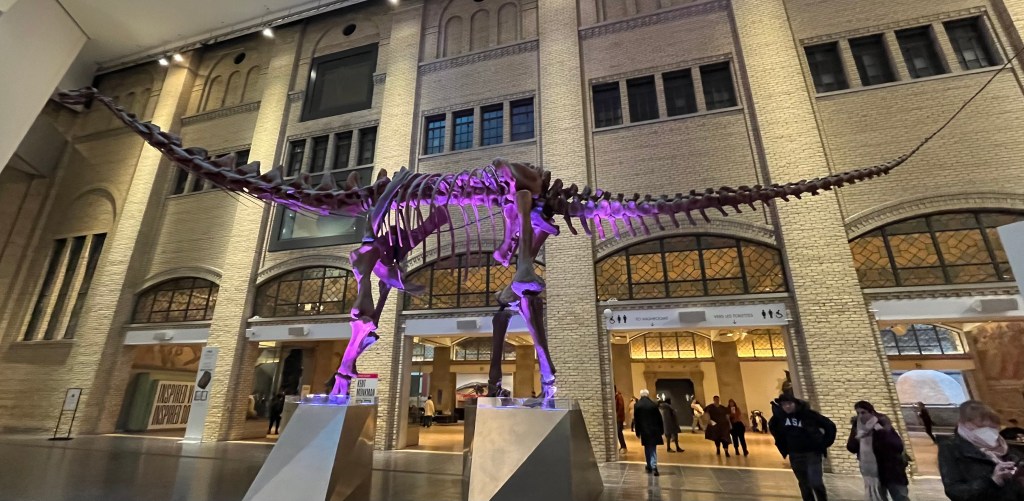
Dinosaurs laid eggs that were often protected by the mother while they were in the nest. In 2021 a fossil was discovered of a dinosaur that was buried while hunched over her nest of 24 eggs. At least seven of those eggs have preserved bones of the partially developed embryos. The museum has an example of dinosaur eggs on display.
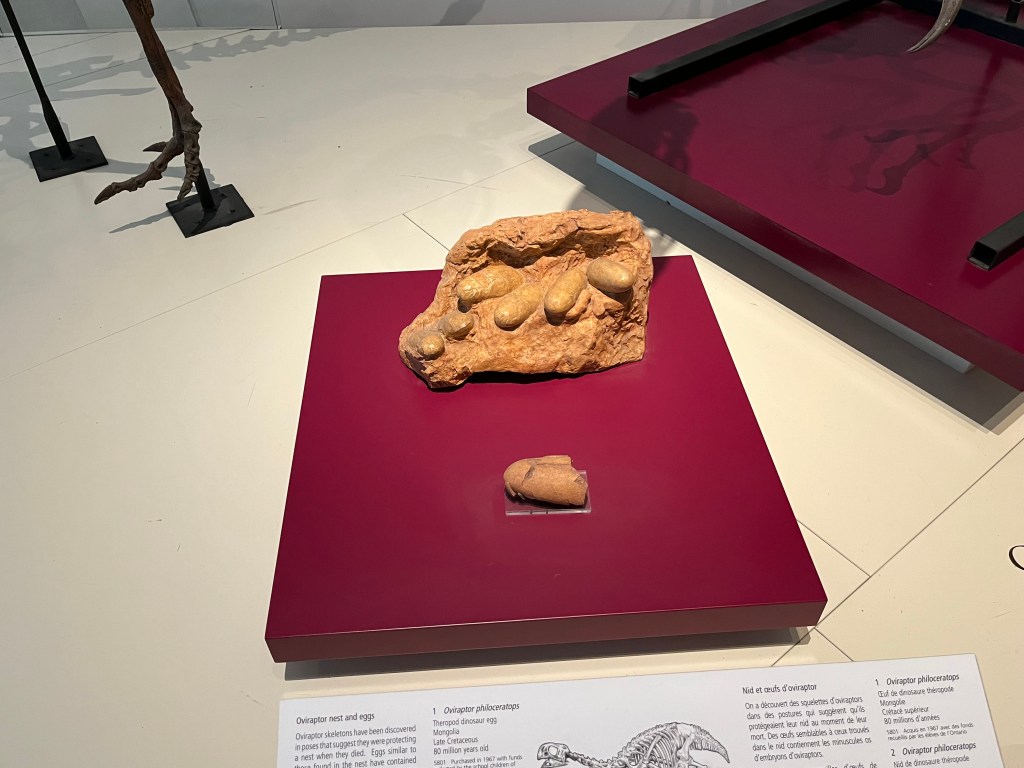
We tend to be most familiar with the largest dinosaurs but of nearly 700 species identified most are actually quite small. And, of course, even the big dinosaurs were small when they first hatched. The image below shows the skeleton of a baby Maiasura, whose name means Good Mother in Greek. They were given this name because nests have been found which contained eggs and young animals. This told researchers that the mothers fed the infants in the nest. That was the first evidence of maternal activity in dinosaurs. The fossil below is of an infant which didn’t have the opportunity to grow to the full 9 metre length of an adult.

The world of the dinosaurs could be pretty violent with the large carnivores looking for prey. Some of the herbivores developed various methods of protecting themselves from long sharp horns on the face to bony shields protecting their necks. Stegosaurus grew flat plates along its back that may have prevented Allosaurus from biting it. Four sharp spikes protruded from the end of the tail and this could be swung at predators to convince them to find easier meals elsewhere. Hollywood likes to show this animal fighting off a Tyrannosaurus but in fact they lived millions of years apart and the Stegosaurus had died off before the T-Rex came along. The Stegosaurus had one of the smallest brain to body ratios of any of the dinosaurs but eating plants all day likely didn’t require a lot of thinking.
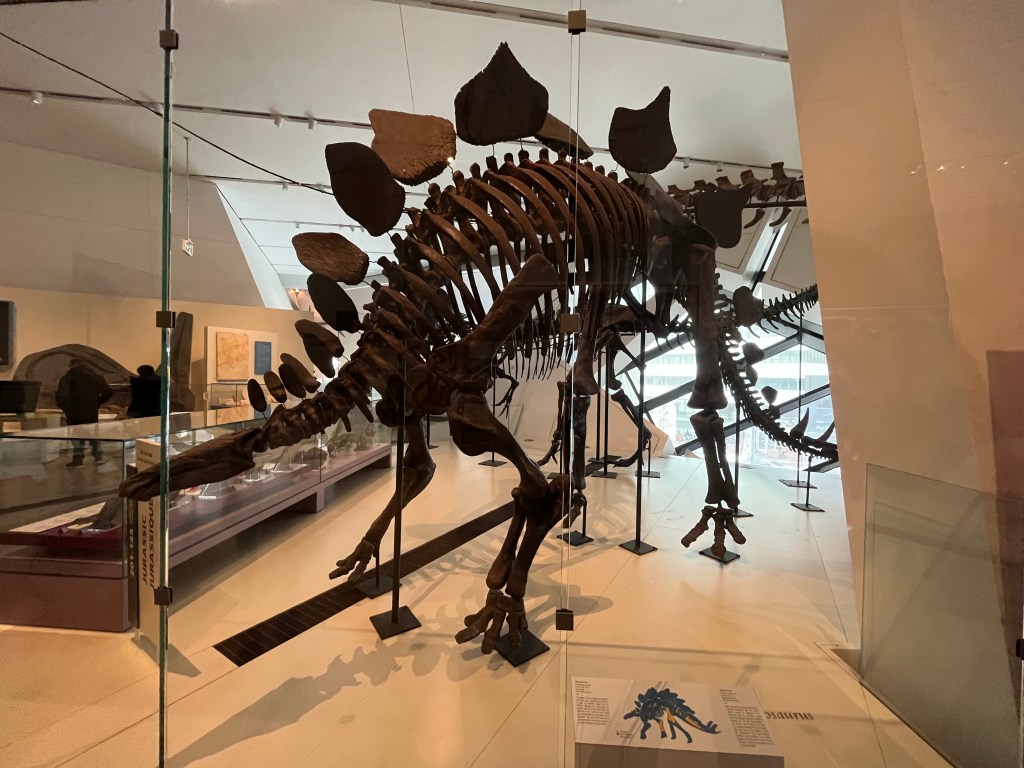
Dinosaurs first appeared around 245 million years ago and died out about 65 million years ago. During that time they dominated the land, sea and air. There’s a lot of speculation about what killed them off and chances are that we will never know. We are fortunate to have so many fossils available and places like the royal Ontario Museum where we can go to view them and learn about these fascinating creatures.

The Royal Ontario Museum is the type of place that can be visited many times and there will always be something interesting to look at and learn about. The dinosaur exhibit is just one small part of the museum.
Google Maps Link: Royal Ontario Museum
Like us at http://www.facebook.com/hikingthegta
Follow us at http://www.hikingthegta.com
Also, look for us on Instagram




